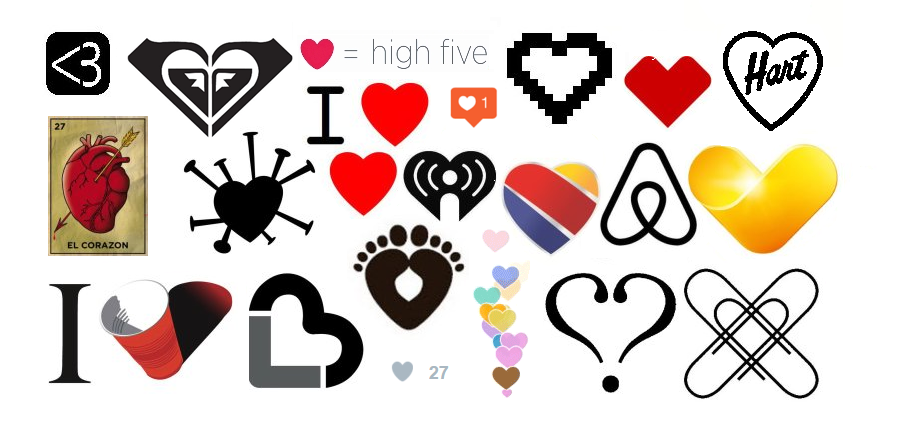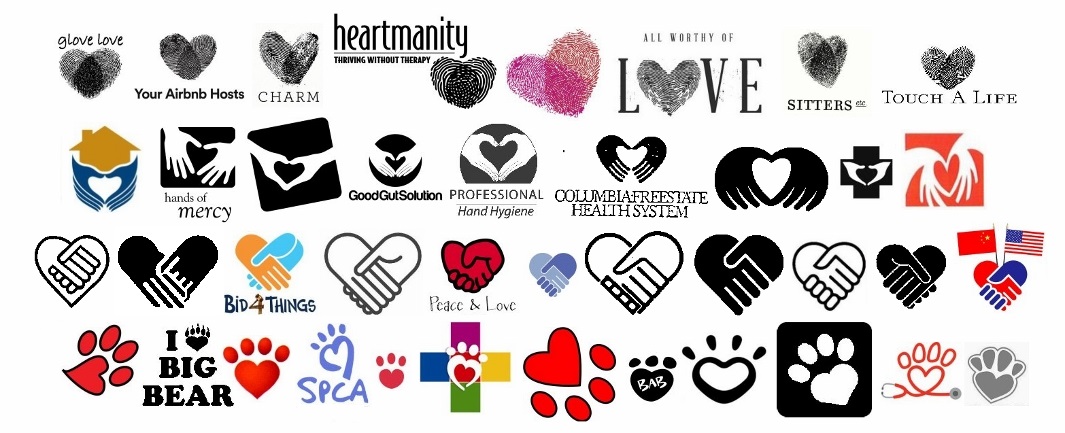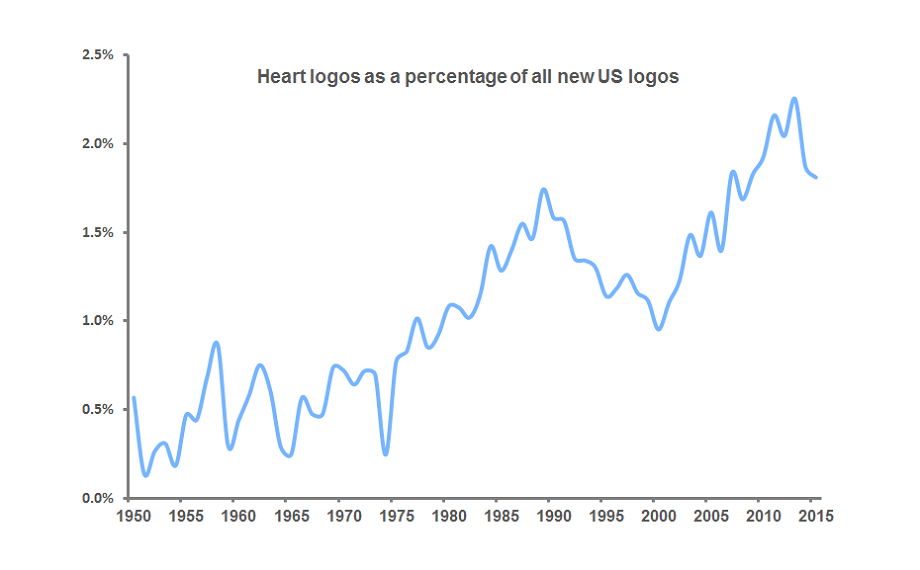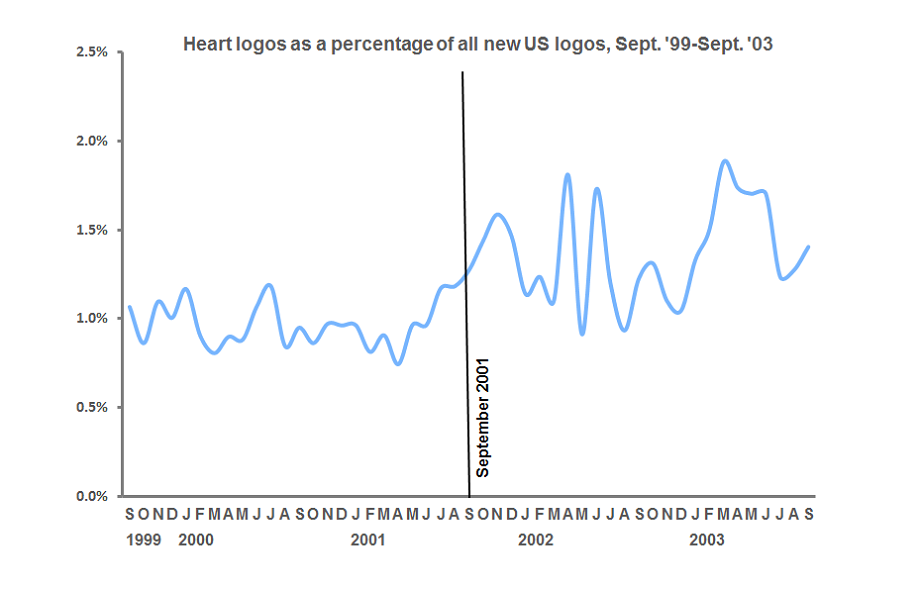With Valentine’s Day upon us, hearts are everywhere, and they seem especially prevalent these days in logos and other visual symbols. Art historian Martin Kemp, in his 2012 book Christ to Coke: How Image Becomes Icon, outlines the fascinating and complex use of the “heart-shape” over history, from early anatomical depictions of the organ to the symmetrical symbol that we are familiar with today. “It is,” Kemp writes, “a shape that is appealing in its simple yet seductive rhythm, and once seen it is difficult to forget. It is like the melody of a great pop song.”
This appeal of the shape, along with its positive connotations of love and life, have long made it a popular design element. Oscar-Edmond Ris-Paquot’s 1893 Dictionnaire Encyclopédique des Marques & Monogrammes is full of heart marks used over the previous several centuries.
By the early twentieth century, there were warnings that hearts made for poor trademarks and logos due to overuse and subsequent lack of distinctiveness. Glen Buck, in his 1916 book Trademark Power: An Expedition Into An Unprobed and Inviting Wilderness, wrote “Common and familiar forms do not usually make good trademarks, for they lack distinction. The circle, the square, the crescent, the star, the diamond, the heart, the oval, the shield, the cross, all have long ago been usurped and are burdened with significance.” And yet the register of the United States Patent and Trademark Office continued to fill up with heart trademarks.
The use of hearts in logos was further boosted in 1977 with the introduction of Milton Glaser’s massively popular “I ♥ NY” mark, which quickly inspired a host of imitators. As of this writing, United States Patent and Trademark Office records show that there are 1,407 “I ♥” trademarks registered.
In recent years, designers have realized the potential of the simple heart shape to be used in increasingly clever and elaborate ways. One such application is to turn the heart into a letter of the alphabet for use within a wordmark. The versatile heart shape may take the form of, at a minimum, the letters a, b, c m, o, u, v, and y. A 2013 Emblemetric analysis showed that hearts are especially popular elements of “frankenmarks” (wordmarks featuring a pictorial element replacing a letter), appearing in 3.54 percent of such logos.
The popularity of the heart, though, often means that appealing visual uses of the shape have been done before. Designers seeking to create a logo that employs two fingerprints to make a heart, or two hands to form a heart, or a handshake as a heart, or a heart within a pawprint should perhaps reconsider.
The ubiquity of hearts has continued in recent years, as companies such as Southwest Airlines, CVS Health, Airbnb, and Thomas Cook have unveiled new heart logos. Hearts play an important role in indicating positivity on social media sites such as Instagram and Periscope. Late last year, Twitter famously changed its starred “favorites” to heart-denoted “likes,” and detached the symbol from its traditional meanings, declaring that it could represent anything from “wow” to “high five” to “stay strong.” Hearts are consistently among the most commonly-used emoji, and can even be expressed in plain text form as “<3”.
Analysis of United States Patent and Trademark Office data reveals the increasing use of hearts in logos over time. Heart logos as a percentage of all US logos peaked in 1989 at 1.74 percent, then declined to 0.95 percent in 2000. Starting in 2001, heart marks took off again, reaching 2.25 percent of all logos in 2013.
The sharp increase between 2001 and 2013 may be attributable to any number of causes that lie beyond our understanding. But it is worth considering the possible impact of the September 11, 2001 terrorist attacks on the American psyche and, subsequently, American logo design.
Zooming in to examine the data by month, we can see that the period following September 2001 brought several spikes in heart logos as the trend began to move upward. Of course, the timing of the filing of trademarks for businesses and products is dependent upon many factors. I don’t find it unreasonable, however, to speculate that in the wake of September 11, Americans’ yearning for love and healing was ultimately manifested in the heart-shaped logos that surround us today.








